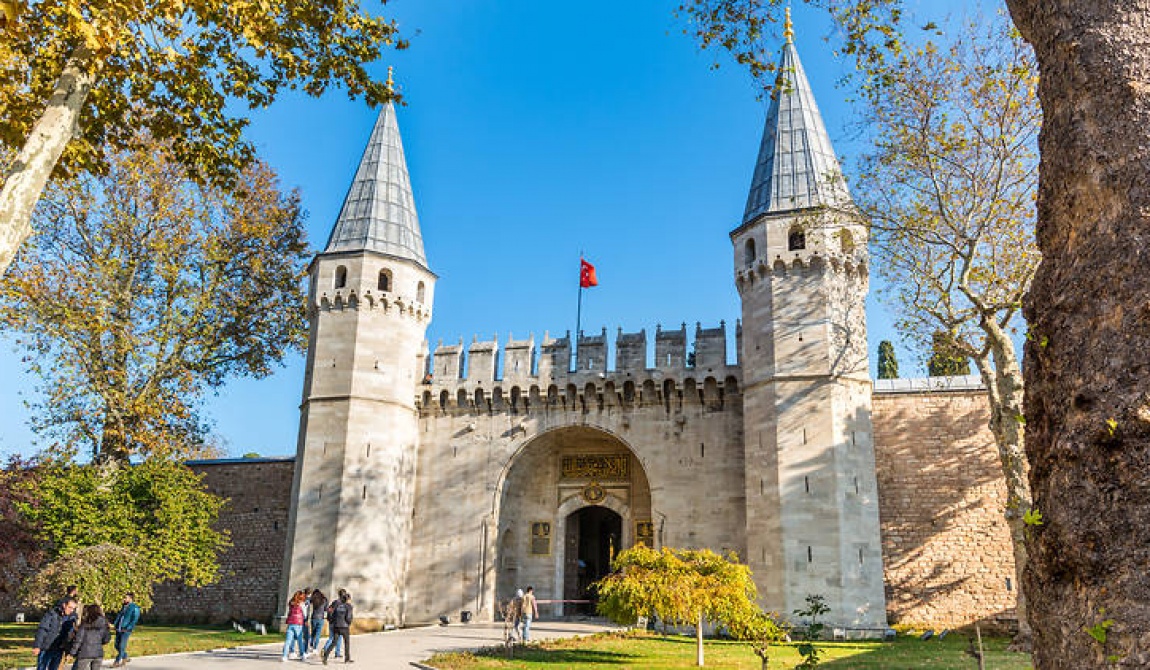 History
HistoryDiscover the Mysterious World of Topkapi Palace
By SU Magazin / 2024-06-04Istanbul is a city that has been home to many civilizations throughout history and contains the traces of different cultures. Topkapi Palace, located in this magnificent city, is a historical treasure that represents the splendor and wealth of the Ottoman Empire at its peak. Built in the late 15th century by Sultan Mehmet the Conqueror, this palace hosted Ottoman sultans for 400 years and served as the administrative center of the empire.
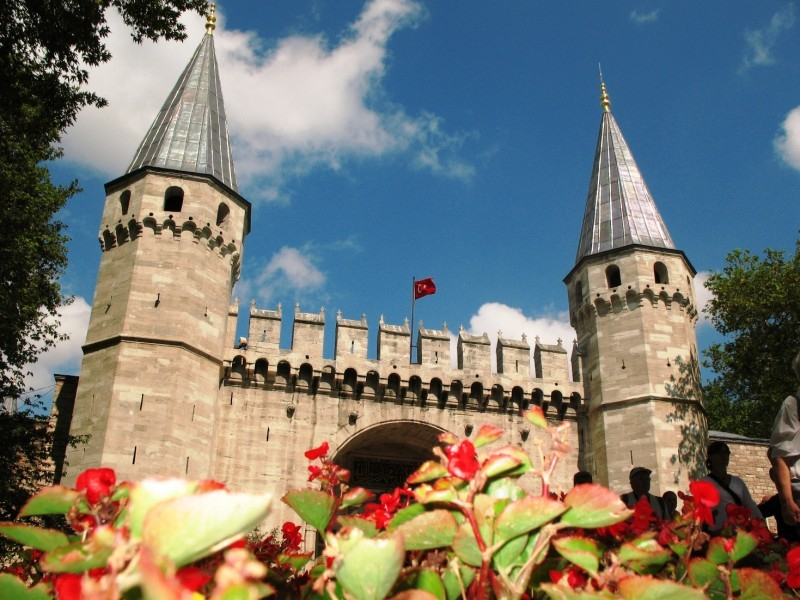
History of Topkapi Palace
The construction of Topkapi Palace began shortly after the conquest of Istanbul in 1460 during the reign of Mehmed II, Sultan Mehmet the Conqueror. The palace was completed by 1478. During this period, the palace was used to house the central administration of the Ottoman Empire.
During the reign of Bayezid II, Topkapı Palace became not only an administrative center but also a residence where the sultan lived and managed state affairs. The palace included the sultan's chambers, the harem and various halls.
Towards the end of the 17th century, Ottoman sultans began to prefer Dolmabahçe Palace and the importance of Topkapı Palace began to decline. In the mid-19th century, the palace began to be used as a museum.
Topkapı Palace started to be used as a museum after the foundation of the Republic of Turkey. In 1924, the palace started to serve as a museum and in 1985 it was recognized as a World Heritage Site by UNESCO. Today, Topkapi Palace serves as a museum open to visitors and houses a rich collection reflecting the history and culture of the Ottoman Empire.
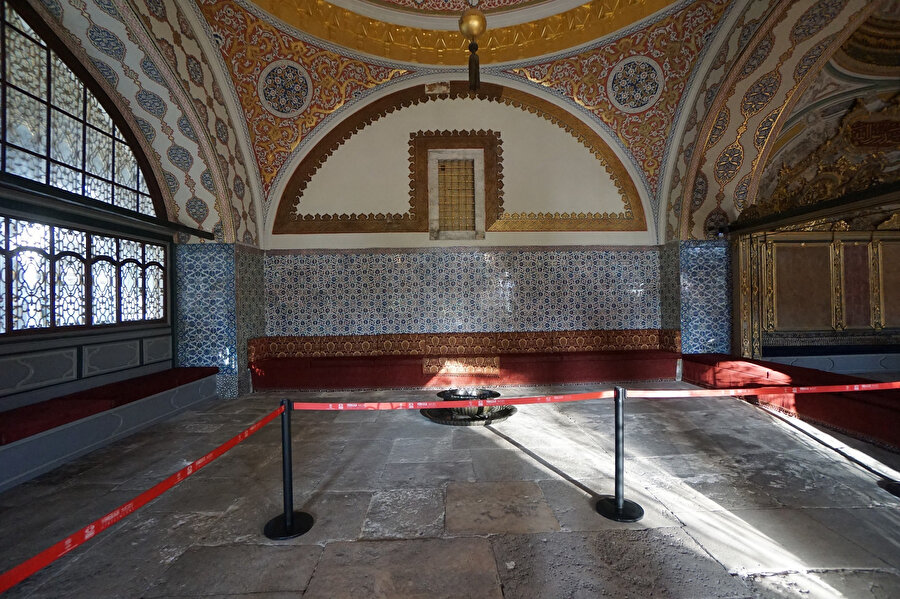
Sections of Topkapi Palace
Of course, the various parts of Topkapi Palace reflect the complex structure of the palace and the different functions of the administration of the Ottoman Empire. Here are the main sections of Topkapi Palace:
Enderun
In the main section of the Enderun; Hünkâr Sofası, where the Sultan manages the official affairs of the Sultan and discusses state affairs, Has Room, which belongs to the private life of the Sultan, Sofa-i Hümayun, where the Divan-ı Hümayun meetings are held, Dârüssaâde Ağalar Dairesi, where the officials responsible for the security and order of the palace are located.
Harem
In the Harem section, there is the private room where the Sultan lives, the Valide Sultan Room where the Sultan's mother resides, the Harem Aghas Room where the male officials in the Harem section stay and the Concubine Rooms where the Sultan's concubines reside.
Divan-ı Hümayun
Located in the largest courtyard of the palace, this section includes the area where the sultan discussed government affairs and dealt with state matters. The Divan-ı Hümayun served as a platform for the people and state officials to communicate with the sultan.
Topkapi Museum
Part of the palace is used as a museum and contains rich collections from the Ottoman Empire. Clothes, weapons, jewelry, manuscripts and personal belongings of the Ottoman sultans are on display.
Second Courtyard
In the second courtyard of the palace, there is the Babüssaade Aghas Department, where the security guards were housed, and the Ehl-i Hümayun Department, where the Sultan's private servants were housed.
Palace Gardens
The palace is famous for its various gardens. These gardens feature landscapes enriched with flowers, trees and ornaments.
These sections are important components that make up the overall structure of Topkapi Palace. Each one represents different aspects of the Ottoman Empire and the various functions of the palace. By visiting and exploring these sections, visitors can closely witness the historical richness of the Ottoman Empire.
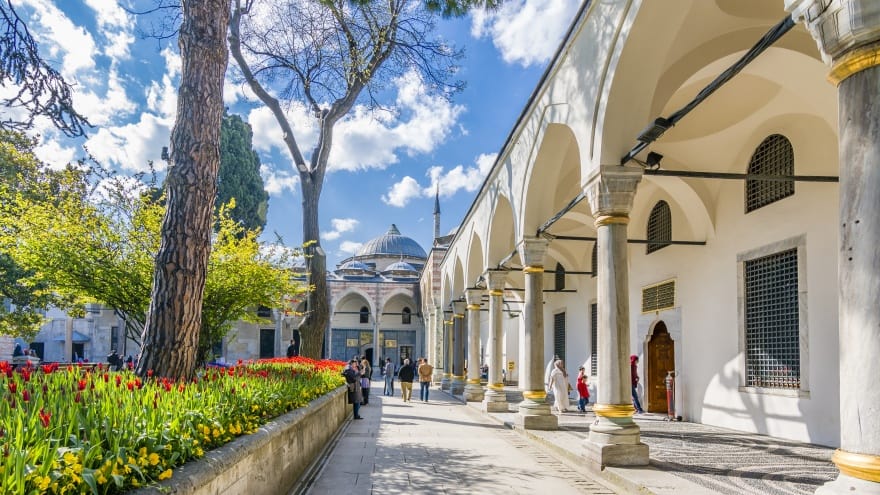
Architecture of Topkapi Palace
The architecture of Topkapi Palace has a unique design that reflects the power and splendor of the Ottoman Empire at its peak. The palace has expanded over time with additions and changes in different periods.
Topkapi Palace has a complex structure based on three main courtyards. The first courtyard contains public areas, while the second and third courtyards are more private and reserved for the sultan's administration.
The basic structure of the palace is built of cut stone and brick. The exterior of Topkapi Palace is adorned with detailed tile panels decorated with colorful ceramics. These tiles add a characteristic aesthetic to the palace.
Inside the palace, passages and doors separate the different sections. These doors are usually decorated with elaborate wooden details, pediments and ornaments. Inscriptions on some doors are a common detail in Ottoman architecture.
Each courtyard represents a different function. The first courtyard houses the public areas and provides the entrance to the palace for visitors. The second courtyard contains the Divan-ı Hümayun, where state affairs were discussed, while the third courtyard contains more private areas, the palace gardens and private apartments.
The Enderun is the inner part of the palace where education, administration and governmental affairs were conducted. The Harem section is a private area reserved for the sultan's family and concubines.
Domed buildings and mosques have an important place in the architecture of Topkapı Palace. Especially the domed structures of the Harem and Divan-ı Hümayun display the subtleties of Ottoman architecture.
The various gardens of the palace were considered as a part of the architecture and carefully planned in landscape design. These gardens feature various plants, flowers and fountains.
The architecture of Topkapi Palace has survived as a historical legacy, reflecting the wealth and splendor of the Ottoman Empire at its peak. Visitors have the opportunity to see the aesthetic and cultural characteristics of the Ottoman period while exploring the magnificent architecture of the palace.
After visiting Topkapi Palace, there are many hotel options to relax and enjoy the city. Among these options, you can also choose Sura Hotels, which stands out with its historical atmosphere and central location.
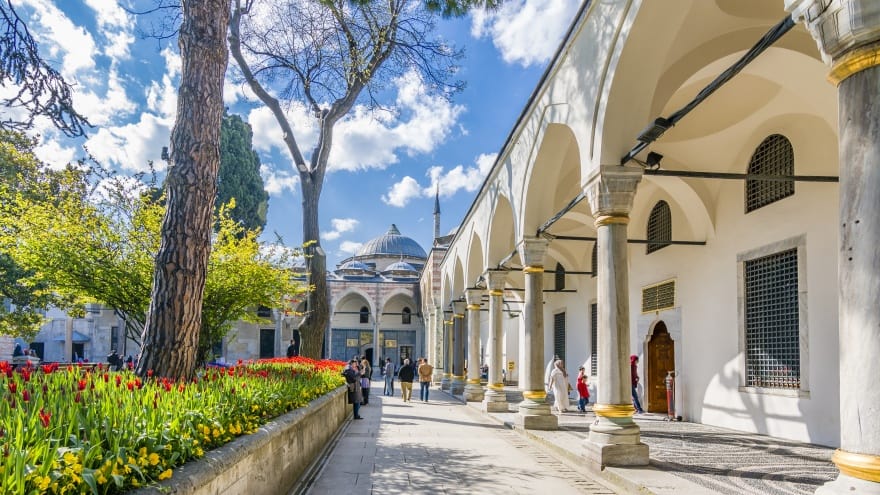
Visiting and Exploring
Topkapi Palace is one of the most visited historical buildings today. Visitors can take a journey into the Ottoman past by visiting different parts of the palace and follow the traces of this glorious empire.
After visiting Topkapi Palace, you can also choose Sura Hotels, which stands out with its historical atmosphere and central location, to relax and enjoy the city. Sura Hotels is located in a historical mansion just a few steps away from Topkapi Palace. The hotel offers its guests a pleasant accommodation experience with its comfortable rooms, friendly staff, and rich breakfast.
For more detailed information and reservations, please visit https://surahotels.com/.